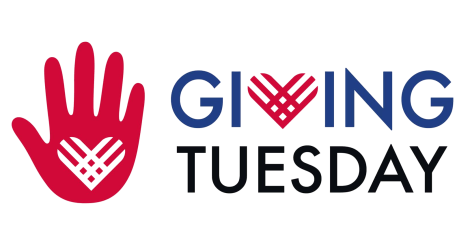Reading Time | 4 minutes
It’s that time of year again: Giving Tuesday is just around the corner, and nonprofit organizations are preparing for the biggest fundraising day of the year. Since 2012, Giving Tuesday has occurred on the Tuesday following American Thanksgiving, Black Friday, and Cyber Monday with the purpose of reminding individuals to be charitable amid the consumerism that comes with the holiday season.
Giving Tuesday has continually grown in popularity, with more organizations participating each year, including K-12 schools, colleges, and universities. With the holidays approaching, many of you may be wondering how to create a Giving Tuesday campaign that is meaningful, memorable, and successful. Giving Tuesday can feel crowded and a bit intimidating with so many nonprofits asking for donations at the same time. We’ve compiled these tips to help you distinguish your campaign from the rest, expand your reach, and maximize your impact. Here are some steps you can take to get the most out of this charitable holiday.
Start Early
Your community won’t show up for your campaign if you don’t get the word out early. You might think that sending an email and posting on social media the day of is enough to engage donors but sadly, it’s not that easy. The most successful Giving Tuesday campaigns are the result of early planning, clear purpose and goals, and a well-conceived promotional strategy. The best time to begin planning for your campaign is in September and October when you can take the time to identify prospective donors, prepare relevant content, schedule timely communications, engage advocates, and more. That way, when November rolls around you’ll be ready to rise above the noise.
Clarify Your Purpose
The purpose of your campaign is different from the goal of your campaign. The goal is about what you want to achieve (donors and/or dollars), while the purpose is about why you want to achieve it (to fund a scholarship, upgrade facilities, etc.). So, before you even set a goal, think about the reason or cause you want your community to support. Then, create a theme and compelling message to effectively spread the word.
Define Your Audience
The earlier you can identify your target audience, the better. Think about who in your community might support this specific initiative (e.g., parents, young alumni, staff, local businesses, etc.). Defining your audience will not only help you to compile the data you need for outreach, but it will make it easier for you to segment your messaging in the most strategic way. You should also start recruiting advocates from the key segments of your target audience so you can effectively leverage peer-to-peer and social fundraising. Why? A peer-to-peer ask is 300x more effective than an institutional ask, and can help to expand your reach exponentially.
Set Your Goal
Your campaign goal should feel like a stretch, but still be achievable. Goals help create urgency throughout your campaign and will help you be consistent in driving towards your goal (and beyond!) in your messaging.
Keep in mind that GivingTuesday is the most competitive fundraising day of the year, so be realistic about what you hope to achieve, and be sure to take into account the length of your campaign. Not all schools limit their Giving Tuesday campaigns to the Tuesday after Thanksgiving. Some launch weeks or even months early, while others extend their campaign after the big day to stretch through the holidays or until they reach a certain predefined threshold or challenge.
Develop a Social Media Plan and Choose Your Preferred Communication Channels
Decide which communication channels (email, video, texting, calling) and social platforms (Facebook, LinkedIn, Instagram, TikTok) you’ll use to promote your campaign. You want to reach donors where they are, so your outreach strategy should align with your target audience (think TikTok for students and LinkedIn for young alumni).
It’s important to brainstorm all of the possible ways you want to communicate with constituents early in the process so you can create channel-appropriate content ahead of time. You should prepare customizable email templates, short video content, social shares, and more so that once you launch your campaign you and your advocates can hit the ground running.
That said, GivingTuesday is an especially noisy day—so you will want to get creative with your tactics. For example, donors will receive dozens of emails from other non-profits on Giving Tuesday, so a crowded inbox may not be the best channel for your message. Social media on the other hand may be the perfect outlet. Schools often have a strong following on social networks and that’s a unique advantage you will want to leverage, especially for peer-to-peer outreach. Be sure that with whatever content you promote, you include easy-to-follow steps for how to donate, to make the giving process as smooth as possible.
Set a Cadence for Communications
Because Giving Tuesday can be so noisy, it’s important to notify your donors in advance so they can set their intentions on donating to your cause before they become bombarded with other Giving Tuesday requests. We recommend sending out campaign awareness content at least a month in advance to get your donors thinking about your campaign and the opportunity to give, whether your campaign will run only on Giving Tuesday, or longer. To stay top-of-mind, it’s important to continue to send out a few pieces of reminder content through the month of November, and then more frequent communications in the days leading up to Giving Tuesday to make sure your donors are engaged and remember to donate.
Make it Easy For Donors to Give
With all the planning and hard work that goes into creating a meaningful and successful Giving Tuesday campaign, you do not want to lose donors during the last mile. That’s why it’s absolutely critical that you make it easy and joyful for your donors to give.
At GiveCampus, we provide online giving solutions to help you meet your target audience where they are, and improve the overall donor experience for everyone. Our engineers rigorously A/B test and fine-tune our mobile-first giving form designs, buttons, checkboxes, and more in an effort to shave precious seconds off the process and effectively grease the wheels of giving. We also make it easy for schools to set up recurring gift programs and instantly identify corporate matching opportunities via our 360MatchPro integration. Finally, GiveCampus is the only fundraising platform with native support for digital wallets, so donors can give using PayPal, Venmo, Apple Pay, Google Pay, or even cryptocurrency.
Want to learn more about how to best reach your donors where they’re at? Check out our GiveCampus products to see all the ways we can help you find and engage more donors and raise more dollars. If you’re ready to see how our platform can improve your upcoming Giving Tuesday campaign, schedule a demo and get started today!



